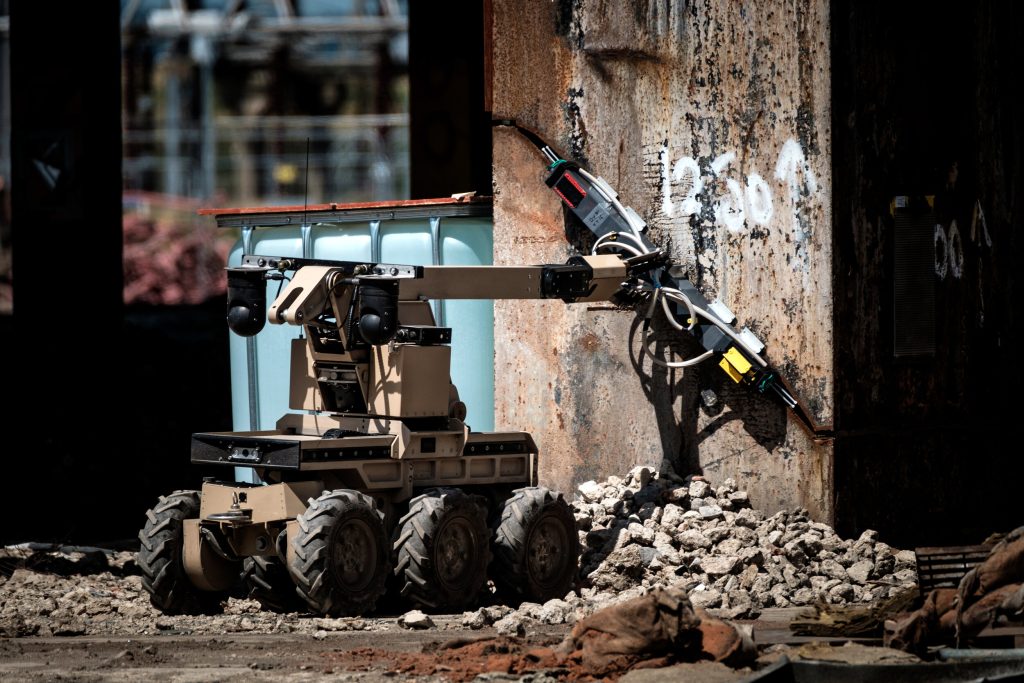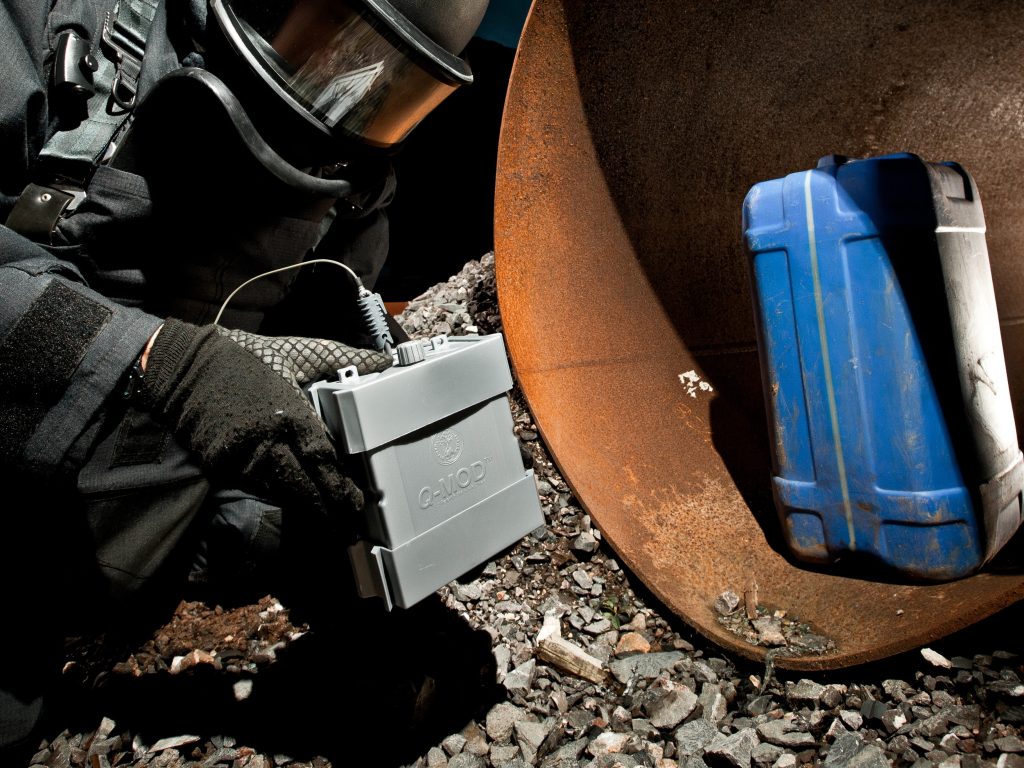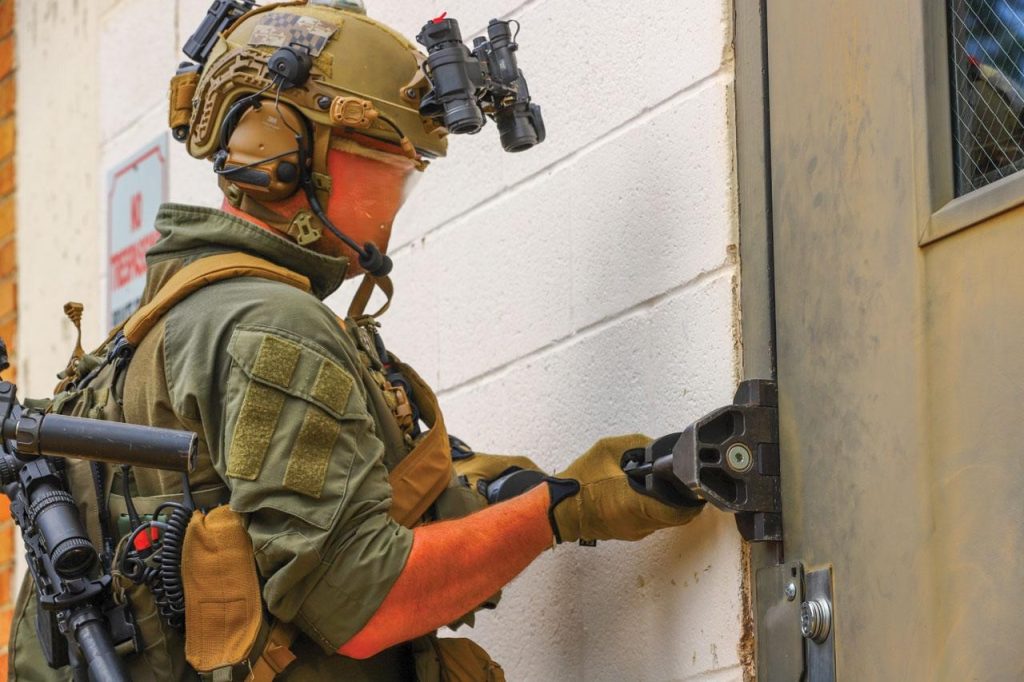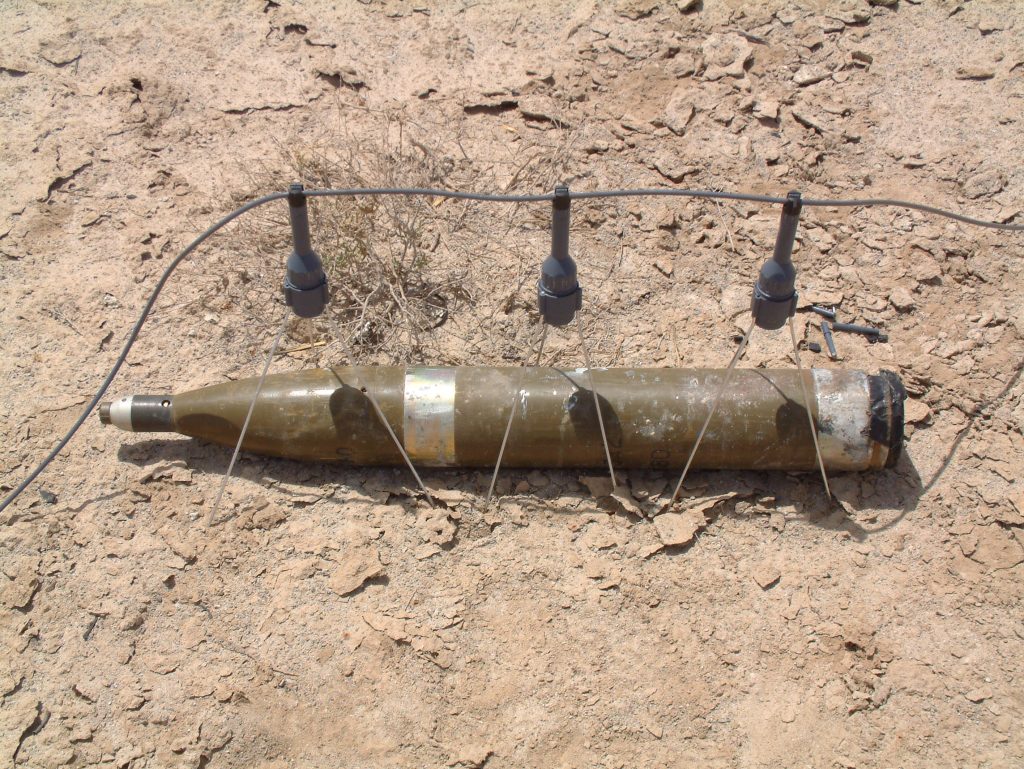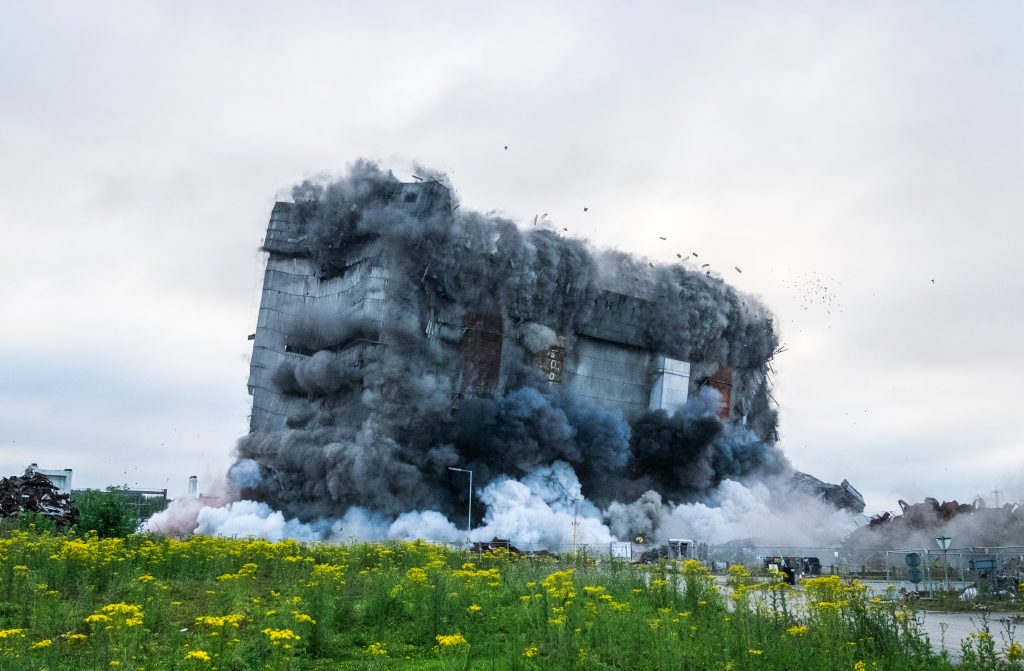
Roland Alford on The Didcot Demolition
Author: Jon Hall
Published: 24th September 2024
For years after the partial collapse and subsequent demolition of Didcot A power station’s boiler house, the ongoing police investigation prohibited anyone involved discussing the explosive demolition. While no criminal cases have yet been announced, the police recently lifted the restrictions allowing the story of one of the most complex and difficult explosive demolitions to finally be told.
The Didcot Demolition
Growing up it was a running joke in my home that every time the phone rang my father would say “This could be the one!” Very occasionally he was right and one of those occasions was at around 3pm on 18th March 2016. In fact, it was a call that would change the course of not only the next 121 days but the entire future of the company.
When “the call” call came, it was from a structural engineer who somewhat cryptically explained that there was a large industrial structure where there had been an incident. Half the structure had collapsed catastrophically during preparations for an explosive demolition and the rest was in an unknown state. He gave some technical details and asked if I thought we would be able to complete the demolition and, just to make things interesting, do it remotely from 50m away. I immediately started thinking aloud, running though ideas as I went:
“We can cut the remaining steel explosively because we made linear cutting charges.” Tick.
“We know how to use explosives to kick heavy things around from our IEDD and breaching knowledge.” Tick.
“We have experience placing explosive charges using robots through our IEDD experience and happen to know several of the robot manufacturers.” Tick.
“How can we connect all the charges together to ensure that they all functioned correctly and in a particular order? Not sure, but we know how to invent things, so I’m sure we can find a way.”
In short, yes, we could do it.
Approximately two hours later, along with two others from my team, I was being inducted onto site at Didcot A power station ready for our first recce.
A crime scene
No-one knew what caused the collapse and whether the remaining structure was also about to collapse. What we did know was that the boiler house, consisting of two top-hung boilers, was in the process of being prepared for an explosive demolition when at approximately 4pm on 23rd February 2016 one boiler and half the structure collapsed suddenly killing one worker immediately and leaving three more listed as missing, presumed dead. Had the collapse occurred a few minutes earlier, when the crew were not on a break, the death-toll would have been far higher.
By the time we arrived on site three weeks later the HSE had put in place a 50m exclusion zone around the structure along with monitors and alarms in case it started moving. From the moment we first stepped onto site until a month after the blow-down, we never once went inside the exclusion zone. The police were treating it as a crime scene and investigation site.
The primary objective
Access to site required going through multiple layers of security and if photos were taken, they all had to be copied into the police evidence system and submitted with a police report. This was going to be a demolition unlike any that had been attempted before, carried out under constant scrutiny from multiple stake-holders including the HSE and the police who both had a permanent presence on site.
The primary objective was to enable the job of recovering the bodies of the three missing men. Processing of the debris continued from the far-end of the debris until it reached 50m from the it Based on information from the day of the collapse, it was believed that the three men had been working near the middle of the building towards the end that remained standing. The rest of the structure would need to be dropped to reach the missing men.
Building a team
My father had last carried out explosive demolitions in the late 1980s and he had the most experience in the company. For the rest of the team and me, it was time to start learning, and fast. It was not just how to conduct demolitions. The Construction Design and Management (CDM) regulations and just about every aspect of working on a modern demolition site was all new to us. Suffice to say that this represented a steep learning curve while we focused on the real work of figuring out how we were going to carry out the demolition.
It soon became apparent that the explosive demolition methods used in the UK had changed very little in 40 years. The standard technique used in the UK is to fully cut columns, leaving them resting on flat shims and simply using explosives to kick the cut sections of column out of alignment to trigger the collapse.
“You had better be as good as your stap line!”
The use of explosive linear cutting charges to cut steel had, for several reasons, never been embraced and there was a significant amount of resistance and scepticism towards some of our ideas and methods because they were seen as unproven or unreliable. The reality is that these charges have been used by the military for decades and in the US, linear cutting charges have been a key part of the demolition of steel structures since the 1960s. With the exclusion zone in place at Didcot, this project could not be done without explosive cutting as manual burning was not possible.
When we were given the go ahead to start working on plans to do the demolition remotely, I was told “You had better be as good as your stap line!”. Given that it is ‘When you can’t afford to fail‘ it was time to step up and accept the challenge.
Gathering in the robots
From the start, we decided to approach the job like an EOD task in which the first option is always a fully-remote method, normally using robots. If that is not possible, then a semi-remote approach is taken in which robots are used whenever possible and tasks are only done manually when robots cannot do them, reducing exposure to risk to the absolute minimum. Only in extreme cases would a fully manual approach, the “cut the red-wire moment”, be considered. It is always with a degree of pride that I tell people that at Didcot we never needed to go beyond the fully-remote stage.
To achieve that, the first task was to get hold of robots and prove that they were up to the task. While there are a handful of manufacturers of EOD robots, they normally build-to-order and rarely have any spare. After calling around all our contacts we were eventually able to locate two small Chevette robots that had recently been upgraded by ABP while Reamda in Ireland had two larger machines available, one was the final pre-production prototype of their next generation robot, the Reacher, and one R-Evolve which is essentially a modern incarnation of the venerable Hobo.
These were brought to site along with an industrial Brokk machine which had been fitted with remote controls. Finally, we were able to use our contacts to persuade the Army to postpone scrapping the Remote Tractor which is essentially a JCB backhoe painted green with remote controls installed which was two weeks from going out of service and to provide it with a full team of operators. We had created a unique stable of robots with very different capabilities which would all be stretched to the limit by the project.
Specialist tools for specialist tasks
The thing to realise about EOD ROVs are that they are very much like Formula One cars:
- They are not mass-produced and need a team to manage and maintain them.
- Designed to carry out highly complex and specialist tasks that are beyond commercial robots before they are taken back to the workshop and fixed after every outing.
- Not designed to be workhorses that work all day, every day without breaking. The Brokks and Remote Lightweight Tractor are both at the other end of the spectrum; less dextrous but capable of working all day lifting, shifting and carrying out heavy tasks and then doing it all again the next day.
Alongside our team of ROV operators we had technicians from Reamda and ABP on site to keep the robots going making repairs and carrying out daily maintenance. At the height of operations, we would send and ROV on a “mission” sometimes lasting up to 3 hours, bring them back, swap out the batteries and send them straight back out to work. By the end of the project, it was estimated that the robots each got about three years-worth of usage in only three months. Reamda valued this experience as it allowed them to work out which components were most prone to failure and redesign them for the future.
Roles for robots
We quickly developed a system in which the small Chevettes were used as a mobile pair of eyes. This allowed operators to have more angles of view and the ability to zoom in on areas which the larger R-Evolve and Reacher were working on. The Brokks lacked cameras altogether and were being operated beyond where the operators could see, so instructions were relayed by radio by the Chevette operators who were working out of an ISO container. Watching a ‘crude’ Brokk reach forward and snip a piece of re-bar that was poking out of the ground and too small for the operator to see was an amazing thing. Meanwhile, the Army team with the Lightweight Tractor were put to work clearing the piles of crushed concrete that had been placed against the columns to allow our own charges to be placed accurately.
A training area in an area adjacent to the boiler house and set about working out how to operate under the structure, clearing obstacles and how to fix charges to the large steel columns. Every action to be taken beneath the structure was first rehearsed and operators were then “licenced” to do it for real. This allowed ideas and designs to be tested and fed back to the explosives “tech team” who were working off-site at the company’s range.

Bringing the house down
Several sections of column that had been taken from the collapsed section of the structure were delivered to the range for testing. This allowed test shots to confirm which charges were suited to specific sections of columns. It also provided targets for developing and testing the kicking charges that would be required to kick out the lengths of column to trigger the collapse. While we had the technical knowhow and several charges capable of punching through the side of an ISO container and destroying and removing an IED in its path, we soon realised that we would need something far more powerful to achieve our goal. A rapid design process was undertaken to develop the ATLAS150, a modular water-tamped kicking charge that was 22 times bigger than our most powerful existing charges.
All this was progressing well, but we still didn’t have a reliable method of connecting the charges to ensure that they would all detonate simultaneously. The breakthrough came when one of the team came up with what was called the Magnetic Bunch Connector (MBC). The concept was simple: make an explosive “junction board” consisting of a layer of sheet explosive sandwiched between a layer of wood and a sheet of perforated steel. Detonating cord tails attached to each individual charge were attached to the MBC using magnets. When a detonator connected to the MBC was fired, the whole board would detonate and each of the connected detonating cord tails would pick up the initiation, running back to their associated charge. If the lengths of each detcord tail was equal, all charges would initiate simultaneously.
Problem solving
Meanwhile the robot team had identified a problem. A beam connecting two large columns had not been cut and would need to be severed to allow the columns to be kicked out of alignment. Unfortunately, the beam was approximately 4.5m above ground and the maximum reach of the robots was only about 2.7m. After much head-scratching and brainstorming, someone remembered a method developed for Northern Ireland to reach the upper deck of a double-decker bus. The robot with the dexterous manipulator arm was strapped to a pallet and then fitted to the front forks of the lightweight tractor which could lift the smaller robot, itself weighing over 350kg high enough for it to place the charges. It looked as bad as it sounds but is proof that there really is no such thing as a stupid idea as the plan worked perfectly.

The home straight
Late in the afternoon of Wednesday 13th July, almost four months after the initial phone call, we presented our final plans. When we had finished, I was looked directly in the eye and asked if I was happy to proceed. They knew that by saying yes, I would be putting my company on the line. I knew the work that had gone into testing, planning, preparing, and training and had absolute confidence in the team and the plan so I had no hesitation to say yes. They then said, “if that is the case, then you can proceed” and we walked out of the meeting with the green light to go ahead.
The next two days were filled with intense activity as with military precision the team put into action all the things that they had been training for. By the end of day on Friday, all our charges were fitted, and the detonators connected. As we placed the last detonator, only one robot was still working as all the others had developed faults of one kind or another.
The night before blowdown I slept well, albeit not that long given the early start the next morning. I was able to stand back and let the team get on with their tasks and at precisely 7.30am, to the second, the demolition proceeded as planned and the boiler house was brought down perfectly.
Legacy
Within two hours of the blowdown we handed the site back, allowing processing to begin and the search for the missing men to proceed. It would take another seven weeks for the final body to be recovered, allowing the family to begin the process of accepting their loss. Seven and a half years later the exact cause for the accident has still not been made public and this article is not the place to speculate about what triggered the collapse.
For myself, I discovered how much I enjoyed the whole process. Since then, we have undertaken several demolition jobs, including the demolition of the Hazelwood Power Station in Victoria, Australia which is still the biggest demolition job in the country’s history. The knowledge and experience we gained has also led to numerous innovations and new equipment that are used outside the world of demolition. The legacy continues.
This article is dedicated to the families of “Whitby” Mick Collings, Christopher Huxtable, Ken Cresswell and John Shaw who all died in the original incident.

Discover the Alford Approach to explosive demolition.
